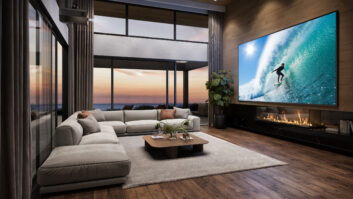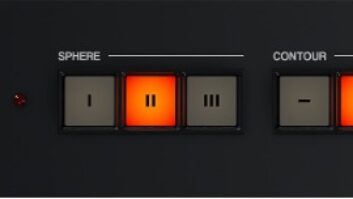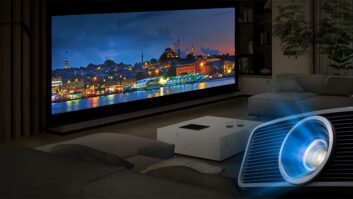At first thought, the idea of utilizing two projectors to generate a 3D image seems like a very logical approach. After all, standard 60Hz projectors can be employed, on screen brightness is doubled and the application automatically benefits from redundancy for 2D applications. The dual projector 3D design, however, is very complex and creates numerous hazards in terms of installation flexibility and overall experience.
REASON #1 – CONVERGENCE
First, consider the fact that both images must be perfectly converged on screen. Experienced installers will remember the days of converging CRT projectors and how difficult that could be. Expect the same, without the benefit of electronic convergence controls in each projector (as was the case with CRT projectors of days past). Unless the installation includes accurate and costly warp engines, the ONLY way to converge two digital projectors is to do so mechanically with the use of lens shift. While a good alignment is possible, the corners are likely to be the most difficult to align between the two projectors.
Making matters more unpredictable — even the very best projectors on the market still suffer from some image shift as their light engines warm up.
REASON #2 – THE ANTI-SWEET SPOT
Second, with two projectors to install, neither can take the position that optimizes performance and lens shift. Accept that lens shift, which allows the installer to mount the projector above the screen, will also need to be employed to converge the two projectors. The practical way of mounting the two projectors is for one unit to be mounted slightly above screen center shifted upward, and the second unit to be mounted close to screen top and shifted downward. With both projectors mounted below the screen top, extreme caution must be used to avoid the light path hitting the back of the chairs, not to mention the head of an audience member.
REASON #3 – COMPLEXITY
Third, a two projector 3D solution requires that the 3D signal be pre-processed and split, with left eye content going to one projector and right eye content going to the other projector. This requires not only additional hardware but also more complex cabling and switching. As of today, there are no retail processors available that can break down a HDMI 1.4a 3D signal to discrete left and right eye with HDCP handshakes.
REASON #4 – HIGHER COSTS, MORE WORRIES
Finally, two projectors means more lamps to consider. Beyond lamp costs, the integrator will also have to monitor lamp life and performance in both projectors to ensure that content for one “eye” does not become brighter than the other.
So, what’s the solution to manageable, enjoyable 3D? A much simpler approach is utilizing a dedicated 3D projector which operates at 120Hz with compatible HDMI 1.4 inputs or dedicated L/R inputs. These units make installation and cabling much simpler, and the resultant experience is nothing short of stunning.
George Walter is VP of home cinema for Digital Projection Inc.







